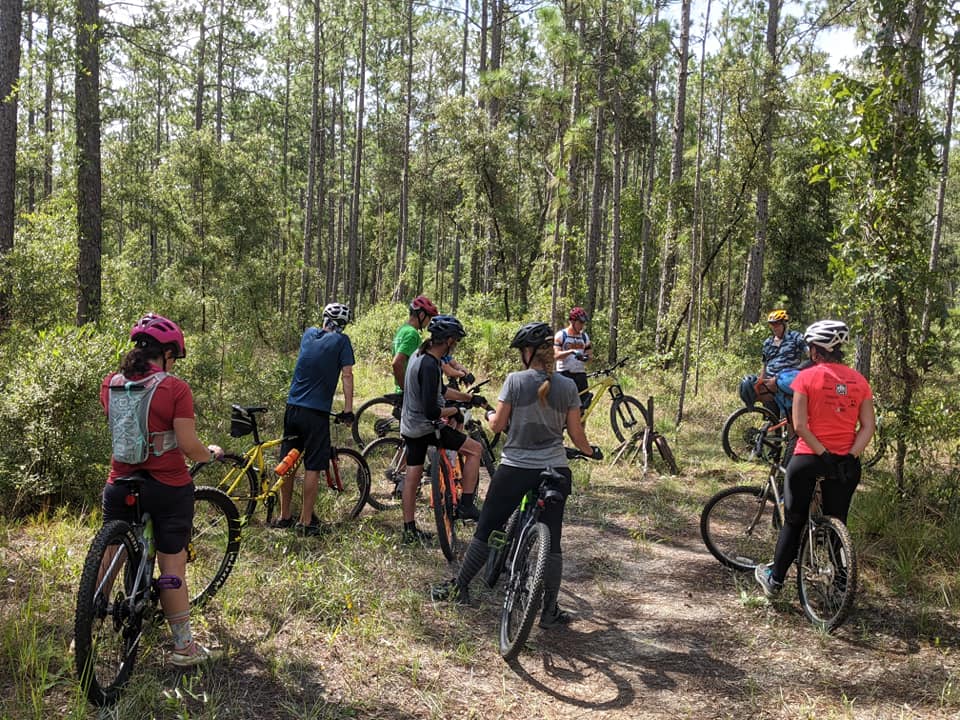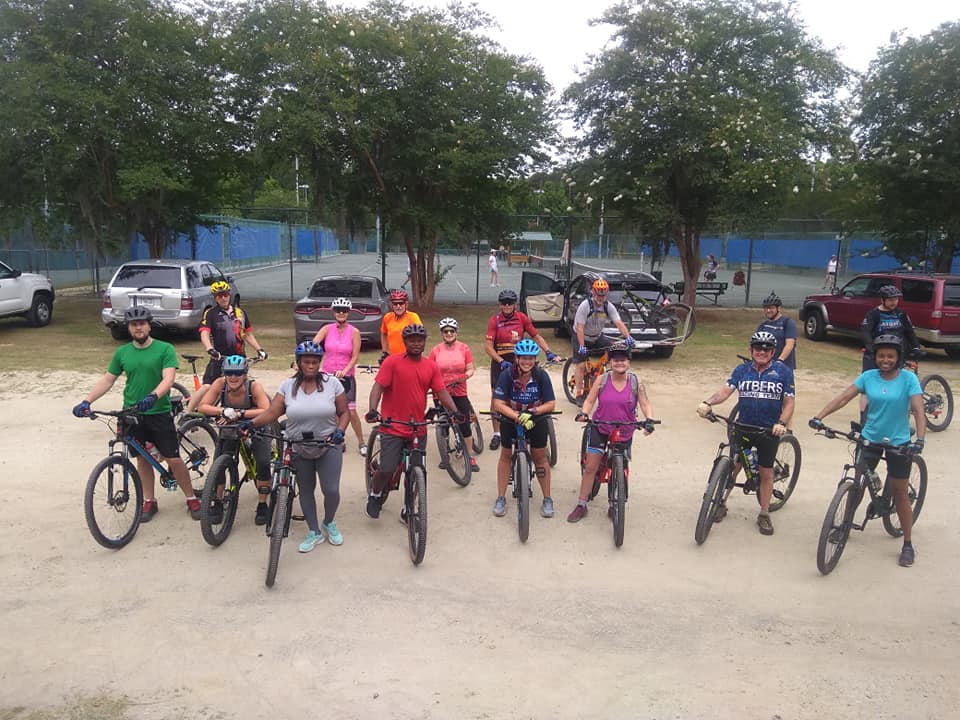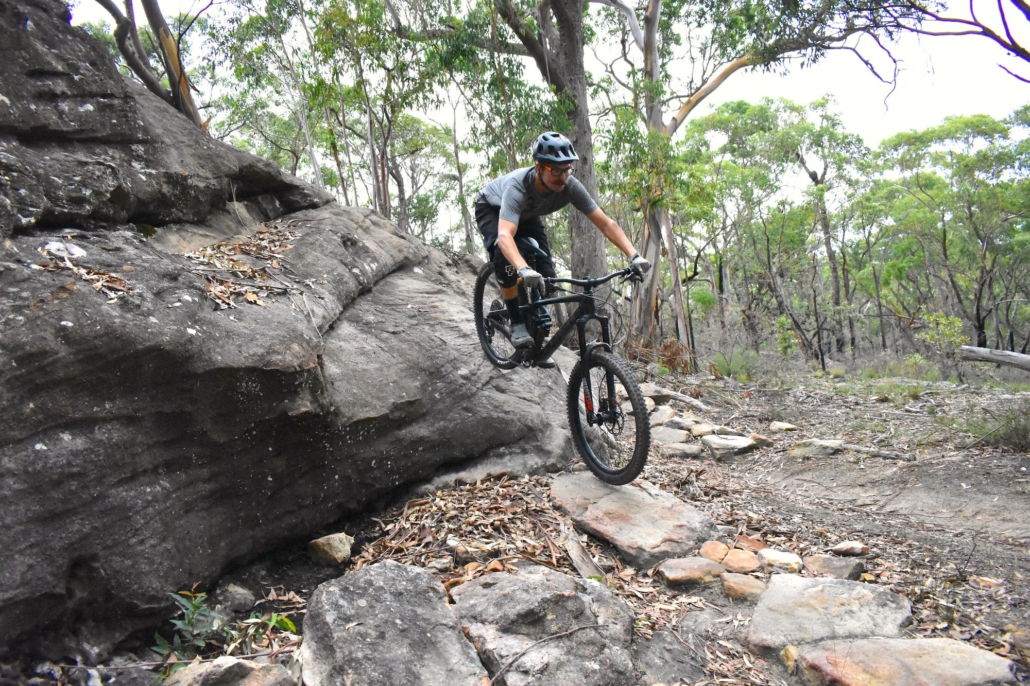In the past year, I have spent more time around new riders than ever before. I’ve helped coach our local NICA team, did weekly rides with new adult riders, and introduced my son to riding on trails.
These experiences made me realize there are ways advanced riders can help beginners before, during, and after rides to really help them enjoy mountain biking.
Pre-ride considerations

Before riding with a beginner, advanced riders should first think about which trail they’ll ride. The topography and obstacles of the trails advanced riders frequent can be overwhelming or even impossible for a new rider to handle. Choose a trail that will be fun for the beginners, not just yourself. Flow trails with gently rolling hills, smooth surfaces, and wide, sweeping curves are great for beginners to cut their teeth on. You want to leave them wanting more instead of wishing they had taken up a different sport.
I failed miserably on this point when I tried to get my wife into mountain biking. I took her on a trail that was a little too rough and had a lot of climbing. She did not enjoy the experience and has no interest in riding today.
Advanced riders should also account for the physical conditioning of the beginner and the type of bike the beginner rides. Brief the beginners on your plans for the ride. Let them know where you are going, what the trail will be like, how they should dress depending on the weather, and how long the ride will last. Make sure everything sounds good to them before you finalize your plans.
When you are prepping for a ride, do not assume the beginners will have everything they need for a ride. Pack extra gear like tubes, tire patches or plugs, and quick links. Take plenty of snacks and water as well, especially if you are riding for more than an hour. Lastly, pack a first-aid kit. Accidents can happen and it is best to be prepared for the worst.
Lastly, do a bike check of every beginner rider’s bike before you ride. NICA has student athletes go over the ABCs of their bikes prior to every ride. A is for air pressure. Make sure a beginner has enough, but not too much air in their tires. B is for brakes. Make sure both the front and rear brakes are functioning properly and have plenty of stopping power. C is for chain. Breaking a chain on a ride will kill a beginner’s mood. D is for drivetrain. Make sure the bike shifts properly both up and down. E is for everything else.
Check all the nuts and bolts and look for any signs of frame damage. Make sure the quick releases on the wheels are tight. The last thing you want is to have a beginner experience a major mechanical failure and get injured as a result. If you see an issue and can repair it quickly, do so. Otherwise, call off the ride and help the beginner get their bike repaired by a qualified mechanic.
I forgot to do a pre-ride bike check on a recent ride with a beginner. A few minutes into the ride, he complained that his front brake was rubbing. Finally, he decided to stop. I looked over his bike and quickly discovered that the quick-release on the front wheel was not locked and the wheel was about to come off. Thankfully, the rider was smart enough to know something wasn’t right and stopped. When I was a newbie, I made the same mistake but did not realize there was an issue and had my front wheel come off while riding. The resulting OTB crash hammered home the importance of pre-ride bike checks and I always do them now.
Things to consider during the ride

Once rolling, advanced riders need to keep some factors in mind. First, be mindful of the pace of the ride. The lead rider needs to set a pace the slowest rider can sustain for the duration of the ride. Start slow and check behind you frequently to see how the rest of the riders are doing. If all the riders are keeping pace with the leader without any signs of struggle, then the leader can increase the pace, but only in small increments.
If there is more than one advanced rider riding with the beginners, then put the beginners in between the advanced riders. Ideally, there should be an advanced rider in the lead, and another one at the back to make sure no beginner is left behind. Try to find the right balance when calling out upcoming obstacles; too many warnings can feel condescending, while too few could put new riders in danger. Provide directions for which way to turn whenever there are forks in the trail, ideally stopping to allow the entire group to make the turn together. Losing a new rider on the trail is a major fail, and shouted directions don’t always come across as being friendly.
The lead rider should also look behind them frequently to make sure the group is together and all the riders are in good shape. If the leader sees a rider showing signs of distress, they should find a good stopping point on the trail and take a break. Offer snacks and hydration to all the riders. It is better to extend the ride time than risk the chance a beginner bonks and needs help getting back to the trailhead.
Finally, advanced riders should not be afraid to call an audible and change plans if needed. If the beginners are struggling more than you anticipated, switch to an easier trail or bail onto a fire road, at least for a little while, to offer them a reprieve. If the beginners are doing better than expected, try taking them on a segment of a more advanced trail to see how they fare. There’s no shame in admitting you made an error in planning, especially if the corrections you make enhance the beginner’s experience.
Post-ride considerations
After the ride, advanced riders should always start by praising the beginners for finishing it and highlight all the positives that happened during the ride. Next, ask the beginners specific questions to get their feedback on the ride. Was the pace okay? What did the leader do well? What things could be changed to make the ride even better next time? Finally, take time to reflect on the ride once you get home. Think about what went right and what went wrong from your perspective. Make some notes for yourself to help you when you plan the next ride with beginners.
Riding with beginners is a great way for advanced riders to give back
There is no greater joy than sharing the stoke of mountain biking with a beginner. Seeing someone discover a new trail or clean an obstacle for the first time reminds advanced riders of why they entered the sport in the first place.
To convert beginners into life-long riders, advanced riders should be mindful of the things mentioned above. Careful planning and attention to detail before, during, and after a ride will show them how amazing mountain biking can be, and what a wonderful community mountain bikers are. No pressure.






















8 Comments
Aug 10, 2021
Aug 10, 2021
Aug 10, 2021
Aug 16, 2021
Aug 16, 2021
Aug 10, 2021
Aug 10, 2021
Sep 6, 2021